As briefly teased in our 2020 Playback Film Awards post, today we offer deeper looks at some of this year’s more unique nominees.
ACTRESS IN A LEADING ROLE
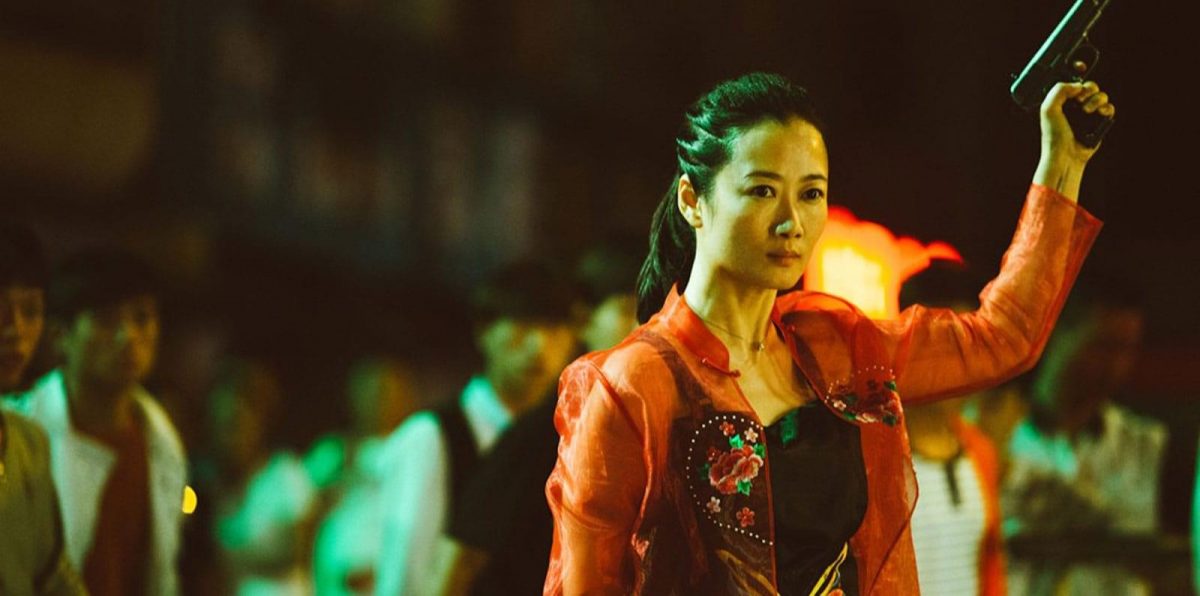
Zhao Tao, Ash Is Purest White
There is little that Qiao (Zhao Tao) does not do over the seventeen years that span Jia Zhangke’s Ash Is Purest White. Most notably, of course, there is the film’s major inciting incident, wherein she fires two shocking, life-altering pistol rounds, later emerging from the resulting years-long incarceration to discover an alienating new world. But the little things are important, too, like dancing (multiple times) to the Village People’s “YMCA” or having a run-in with a UFO obsessive (and potentially an actual UFO). Yet there is one, significant thing she does not do: waver in her steel-headed determination and devotion to Bin (Liao Fan), her one-time mob boss boyfriend who most certainly does not deserve it. Zhao Tao grounds even Qiao’s most misguided decisions in rich human psychology, showcasing how fragility and strength might coexist within the intellectual, emotional, and physical spheres of one person’s habitus in complicated, contradictory ways. Whether tenacious in the middle of a street fight or beat-down and broken on a train leading nowhere, Zhao’s performance is as titanic as the narrative it grounds. — JJ BERSCH
ACTOR IN A LEADING ROLE
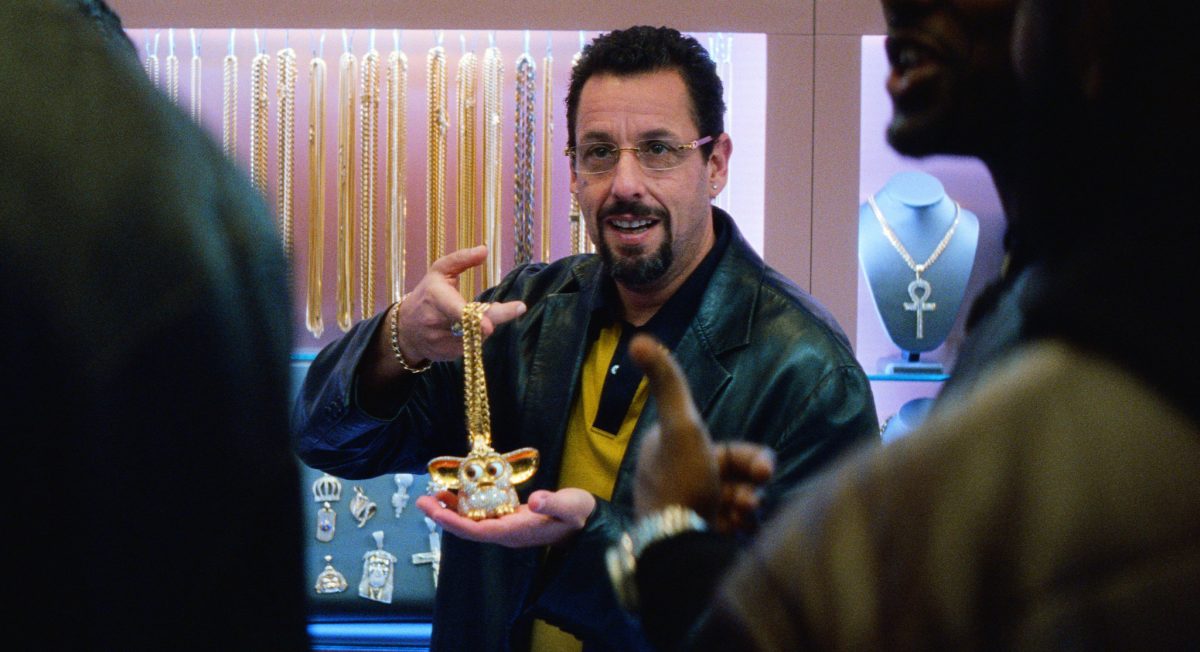
Adam Sandler, Uncut Gems
It seems like many people (Indie Spirit Awards notwithstanding) have written off Adam Sandler’s performance in Uncut Gems for a number of reasons. There’s the fake teeth and goofy sunglasses, of course, and the comic energy present in Sandler’s performance and the film at large do him no favors in the court of public opinion. Cultural assumptions that a comedic performance is worth less aside, some of the traits that have defined Sandler’s best performances resurface in his turn as Howard Ratner, gambling addict and circumstantial Boston Celtics fan. The physicality of Sandler’s comedic work in the ’90s comes through as Howard throws his body through space, rushing from one place to the next or desperately trying to find his place in a room. Howard is an interesting companion to Sandler’s work in Punch-Drunk Love. His patented “quiet-loud” schtick is repurposed in that small romance to capture Barry Egan, whose anger explodes when he feels cornered (which he often does). In Uncut Gems, Sandler flips that dynamic, defaulting to loud in an attempt to be the loudest voice in rooms that are always drowning in sound. It’s in the quiet moments when his true emotion shines through the facade he puts up. In Punch-Drunk Love, Phillip Seymour Hoffman asks Barry if he’s threatening him; in Uncut Gems, a loan shark waiting for his payment asks Howard if he’s having fun. Both characters say yes, and it’s the quiet, comic menace captured in those moments that makes Sandler a performer like no other. — DILLON MITCHELL
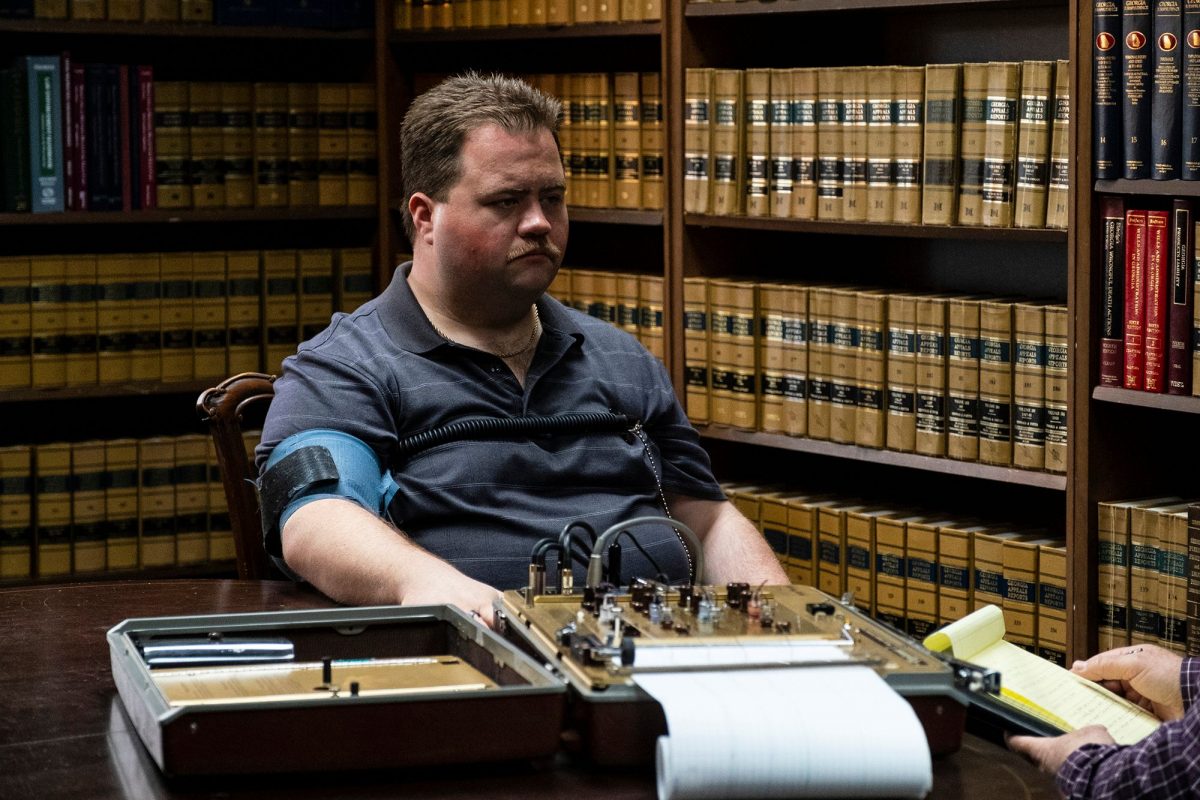
Paul Walter Hauser, Richard Jewell
Whether one finds the film’s larger raison d’être poignant, embarrassing, or just incoherent, a curious near-consensus has emerged around Richard Jewell: specifically, that Paul Walter Hauser performs the title role with uncommon subtlety and restraint. Playing the falsely accused suspect in the 1996 Olympic Park bombing, Hauser could have phoned it in as the spotless martyr, as is the biopic norm. Instead, Hauser shades in the less flattering corners of Jewell’s personality—his deluded sense of self, his self-incriminating instincts, his struggles with communication and recall—and in the process leaves us with a protagonist riddled with contradiction, a poster boy for no rational ideology. Jewell’s weight is also clearly an element of the text, though not usually in predictable ways. Before the fateful bombing, for instance, Jewell makes a beeline to the bathroom, and Hauser performs his character’s gastrointestinal affliction not as slapstick but as an unwanted, immediate pain. This unfashionable, everyman quality is best epitomized in the film’s most moving scene, after the FBI drops its inquiry into Jewell. Much has already been said about the way Hauser breaks down while eating a doughnut—a key moment that both plays into and defies certain stereotypes. But notice, too, the way Jewell still appears fearful, his posture arched and eyes averted, before Jon Hamm’s FBI agent, even after the case against him is technically closed. With its gestures of deference, frailty, and bodily dysfunction, Hauser’s performance is comparable to very few other Hollywood leading roles, save for those in classic melodrama. — ZACH ZAHOS
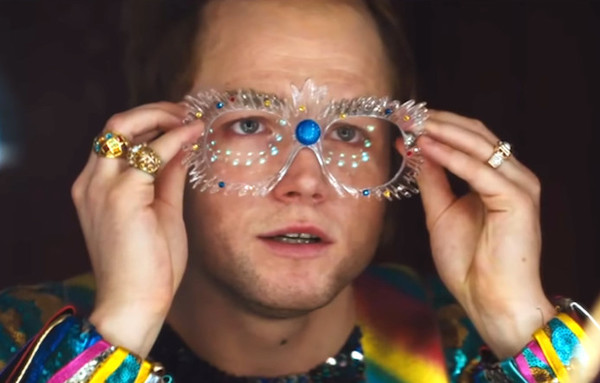
Taron Egerton, Rocketman
Capturing the charisma and electrifying performance style of Elton John at the height of his fame must be a rather daunting task for an actor, but Taron Egerton rose to the challenge. Egerton must match the film’s exuberant musical performances with the deep loneliness and self-destructive behavior that came along with John’s rise to fame, and Egerton makes you feel every beat of that. You can see the small shift in Egerton’s body language and smile from the true joy he experiences at his first, tremendously successful performance at the Troubadour to the forced cheer of his Dodger Stadium performance after a suicide attempt. And one may assume a film about Elton John would be subsumed by the big, showy performances, but Egerton has a knack for keeping the character’s keenest feelings grounded, especially his unrequited love for best friend and songwriting partner Bernie (Jamie Bell). It is through the way Egerton’s sad eyes follow Bernie around a room, or a small shift in how Elton addresses Bernie, that we can tell when the character is in the deepest throes of his crush or, later, has truly accepted and embraced their relationship as platonic. Egerton sold me so hard on this man’s profound need for love I believe I audibly “awww-ed” when the closing credits noted that John’s husband David Furnish now provides him the love he was searching for all those years. The Oscars may have snubbed this lovely and heartfelt performance, but Egerton and Elton John are now adorable buddies out on the awards circuit, so who is the real winner here? — LAURA SCHUMACHER
ACTRESS IN A SUPPORTING ROLE
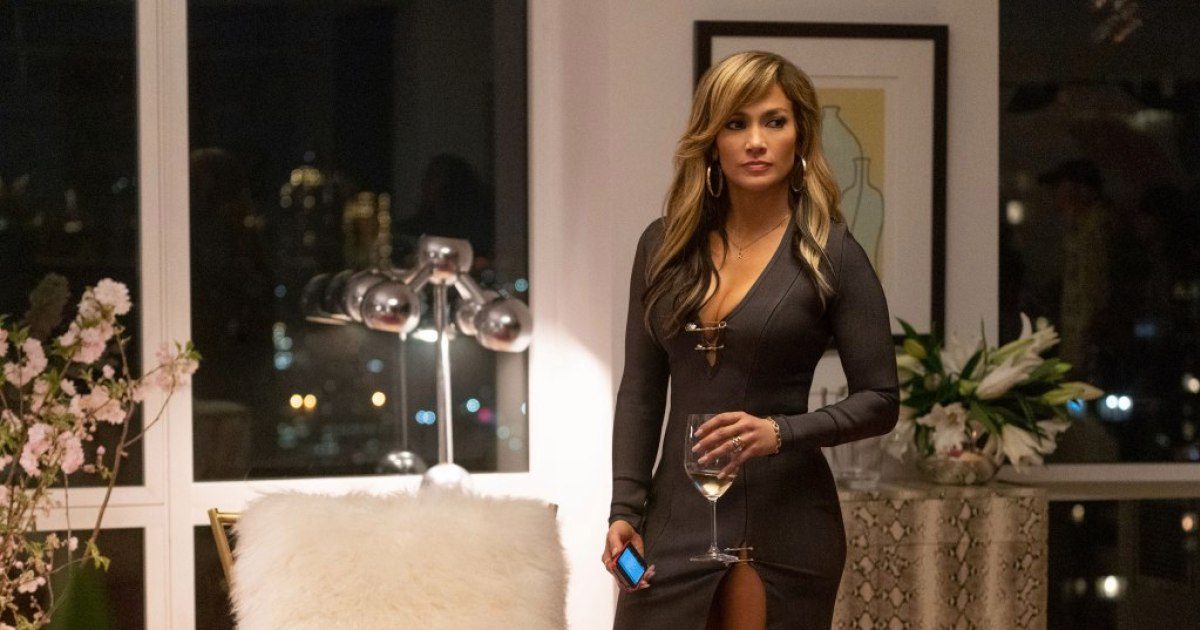
Jennifer Lopez, Hustlers
I, like all of Twitter, feel personally attacked that Jennifer Lopez was not recognized by the Academy for her performance as stripper Ramona Vega in Lorene Scafaria’s Hustlers, adapted from a 2015 article by Jessica Pressler for New York magazine. The snub matters not just for outraged J. Lo fans, but because it reminds us of the types of femininity that can and cannot be seen as “Oscar-worthy.” A complex, sexually empowered woman drugging and stealing money from men that work on Wall Street, evidently, cannot. Hustlers lives in the same grotesque bacchanalian universe as the repugnant, corrupt stockbroker Jordan Belfort, portrayed by Leonardo DiCaprio in Martin Scorsese’s The Wolf of Wall Street (2013). For that role, DiCaprio got a nomination for Best Actor from the Academy Awards and he took home the Golden Globe award for Best Actor, so there’s an obvious double-standard here. So often, the actresses that win are praised for transforming themselves into the role to the point of being almost unrecognizable. Sure, Lopez’s star text and the character Ramona bear some resemblances – steeped in glamorous, hypersexual Latina diva femininity. But Lopez immersed herself physically and psychologically in order to bring this character to life. She trained for months learning to pole dance, as documented in a two-part behind-the-scenes video posted to her YouTube channel. In the video, she explains that her goal was to get to the point where the movements became second nature, as they would be for her character, embodying a potent mix of sex, greed, danger, and athleticism. And for that I think it should have at least gotten a nod, that’s all I’m saying. — JACKIE LAND

Cho Yeo-jeong, Parasite
“Rich people are naive,” declares Kim Ki-taek (Song Kang-ho) as his family feasts in the barren Park estate on an ominously stormy night. “No resentments. No creases on them.” He isn’t referring to any specific member of the wealthy household to which he and his progeny now find themselves in service, but he might as well have tagged his statement with “The mother, especially.” Played by Cho Yeo-jeong, Park Yeon-kyo is, on the surface, a caricature of the callowness afforded by affluence. She is the primary mark of the Kim clan for a reason: she trusts too much and investigates too little, as easily convinced by a touch of YouTube art therapy as her husband’s perilous theorizing about a pair of panties. Her expressions are huge, all wide eyes and hands over the mouth and trembling legs and near-faints. But her matriarchal anxieties are matched only by her fiscal confidence: there is great self-assurance in the way she casually but forcefully litters her sentences with English words and phrases, in the sexual pleasure she derives from role-playing as someone of less fortunate means, in the ability to distractedly throw together an extravagant party the day after the depths of her city were ravaged by deluge. She is naive, without resentments or creases, and all the more powerful for it. It is the comedic performance of the year, and also the most discerning. — JJ BERSCH

Park So-dam, Parasite
We now know that Parasite has won the Oscar for best picture. This is well-deserved, as we know, because it also won the Playback Award for best picture. That said, one aspect of Parasite that was crucial to the film’s success yet somehow missed critical acclaim were the individual performances of the actors onscreen. One performance that captured at least the internet’s hearts was Park So-dam as Ki-jung. Park’s performance best articulates the complicated narrative dance between humor, deception, and tragedy that makes Parasite so engaging as a piece of work. “Jessica, only child, Illinois, Chicago” is rightly recognized for the cultural breakthrough that it is, but Park’s performance is full of knowing facial expressions and deadpan line reads that make the character so interesting. Consider her initial conversation with the mother, where she essentially upsells her from art classes to art therapy by invoking a mysterious trauma in her son. Ultimately this would foreshadow the events of the second half of the film, specifically marking Ki-jung as perhaps the most tragic figure. — TOM WELCH
ACTOR IN A SUPPORTING ROLE
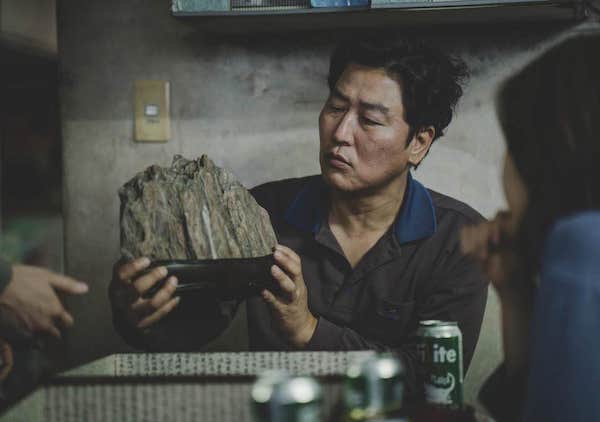
Song Kang-ho, Parasite
Song Kang-ho’s best performances always fail, whether he’s playing a dark horse buffoon (see The Host and The Good, The Bad, The Weird) or a conceited career man (see Memories of Murder) or an opportunistic supporter of something greater than himself (see Secret Sunshine and A Taxi Driver and The Age of Shadows). He has made a career playing characters whose carefully cultivated selves crumble on screen, exposed as performances in ways that are often funny and sad at the same time. In Parasite, the dark horse, the career man, and the opportunist merge in Kim Ki-taek, an out-of-work chauffeur whose faith in his ability to scheme his family out of poverty reveals itself to be both an act and a mantra he tells himself to stay sane. Early in the film, Song manages to make Ki-taek slip in an instant from giving joyful thanks for his family’s bounteous Wi-Fi (piggybacked from a local café) to muttering curses at a local drunk who habitually pees outside their home. It’s a fluidity we’ll see from Song again and again as, in subsequent scenes, Ki-taek adjusts (and then loses control of) his performance: from subservience to skewering honesty, from rage to laughter, from confusion to brutal violence. In one sequence, he literally rehearses his lines. He is a man bound by circumstance to a state of constant performance who comes to recognize, by seeing his reflection in a crazed man, the extent to which he has also been bound by that performance to those circumstances. Leave it to Song to play such a born performer whose performance so perfectly crumbles. — ANTHONY TWAROG

Willem Dafoe, The Lighthouse
Robert Eggers’s weird and wild The Lighthouse was probably always doomed to languish during awards season. It’s at once too mannered and too irreverent to fit the Academy’s sensibilities, marrying a gothic, even Lovecraftian sort of horror with a raucous, flatulent spirit. And although the film is a two-hander in the truest sense (Robert Pattinson deserves attention, too), it’s Willem Dafoe’s Thomas Wake that really carries the film. Dafoe is the saltiest of dogs here, bushy of beard and steely of eye, masking an easily-wounded spirit with an outer layer of pure sea dog crustiness. He’s essentially The Simpsons’ Sea Captain character if he were dropped into a psychological horror film. As he bugs his eyes, shouting to the heavens to bring down the wrath of Poseidon, you don’t know whether to laugh or cower, making him the perfect symbol of the film writ large. And in the end, despite his duplicity, his quick temper, and his unshakably exacting nature, he remains… strangely lovable. Just don’t insult his lobster. — LANCE ST. LAURENT
DIRECTING

Lulu Wang, The Farewell
Based on actual events from Lulu Wang’s life, The Farewell’s script has a depth and intimacy rarely seen outside of projects this personal, and Wang’s direction consistently puts this distinctive understanding of the story to great use. From the beginning of the film, framing and staging stress the complicated dynamics of the characters. Against the wishes of her parents and extended family, the main character Billi, played by Awkwafina in a quietly intense and affecting performance, travels to China to see her Nai Nai (Mandarin for “paternal grandmother”). Nai Nai was recently diagnosed with lung cancer, but she’s the only one who doesn’t know. The family decides not to tell her about her own diagnosis for her emotional well-being, and they fear that Billi will give away the sensitive lie through her inability to hide her emotions, even if she agrees to play along. As Billi arrives at Nai Nai’s apartment, the whole group stares back at her in a wide-angle shot, with emotions ranging from shocked anger (her parents and uncle) to joyful surprise (her Nai Nai and great aunt). The sequence continues to highlight the family’s tension, with the parents and uncle crowding the frame as Nai Nai greets Billi, like they’re pressuring her to put on a smile –– they only back off when Billi makes a joke. And the subsequent dinner scene centers one character in each shot, framed by other family members out of focus in the foreground, a reminder that the collective charade informs every comment and reaction. Wang’s storytelling is inseparable from her compositions, and these complex stylistic choices help make The Farewell one of the most accomplished, moving films of the year. – MATT ST. JOHN
WRITING (ADAPTED SCREENPLAY)
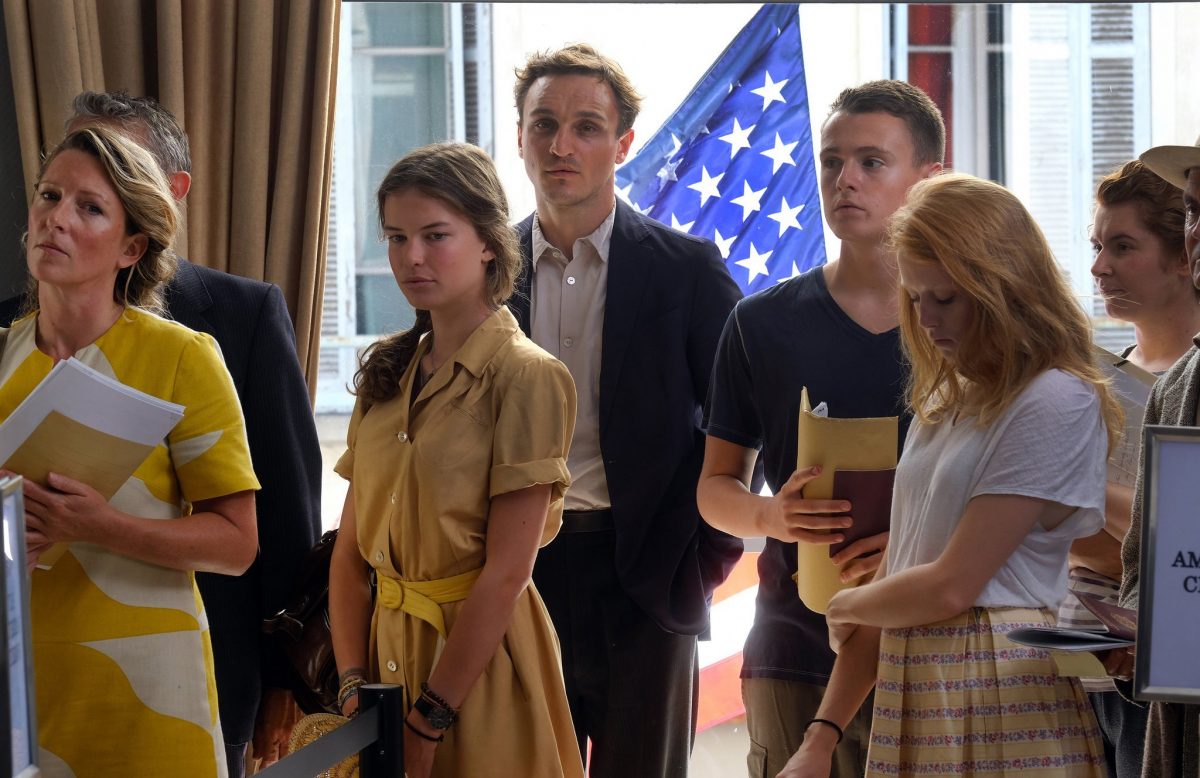
Christian Petzold, Transit
Transit is a film about the futility of choice, but Transit’s screenplay elucidates its power. In his adaptation of Anna Seghers’s 1944 novel of the same name, screenwriter/director Christian Petzold makes one bold, imaginative choice: he transports the story—which concerns a German political refugee attempting to flee an authoritarian regime that’s taken control of France—from its original World War II setting to a vaguely modern context, vague being the key word here. Absent are many hallmarks of the contemporary moment: no cell phones, no personal computers, no screens. Central to the story are contrivances of an antiquated era, most notably a consequential letter delivery. The fascistic state is mostly nameless, its hordes marching to a timeless drum while wearing modern military garb and driving modern military armored cars. The effect is overwhelming, with past and present ever-intermingling, creating a purgatory from which it feels like our protagonist (and we) might never escape. While this might sound overly didactic, Petzold marries his proudly political script to the cool clinicism developed in his last two films, Barbara and Phoenix. The film’s distanced approach eventually succumbs to an emotional climax made all the more profound by the full weight of history—past, present, future—imbued by Petzold’s single significant alteration. His screenplay is nowhere, and everywhere, at once. — JJ BERSCH
DOCUMENTARY FEATURE

Apollo 11
As imagined through archival footage, the Apollo 11 mission was (is) about the convergence of dramatically different scales: workers dwarfed by the Saturn 5 rocket as it lumbers onto the launch site at the Kennedy Space Center; the life stories of the astronauts recounted in brief flashes of family photographs (culminating, the film seems to say, in the mission toward which their lives were always leading); the hurry-up-and-wait time dilation of the launch procedures; the bodily functions of the individual astronauts monitored by villages of scientists wearing variably rumpled shirts and expressions of concern; the lone person stepping onto an expanse never before burdened by anything human. But what’s most striking about Apollo 11, aside from the clarity and frequent beauty of its imagery, is the extent to which the documentary sticks by necessity with the mission control crew. The astronauts remain, despite flashes of footage from the shuttle and lunar surface, cyphers whose experiences can only be imagined by those who are doing all they can from the ground (only so much, really) to ensure that everything goes according to plan. It was this same sense of irreconcilable distance that made the film’s depiction of lunar landing so thrilling (and terrifying) to me: the distant bodies of the astronauts—their steady voices, their unsteady heart rates—became bound up with my own. — ANTHONY TWAROG
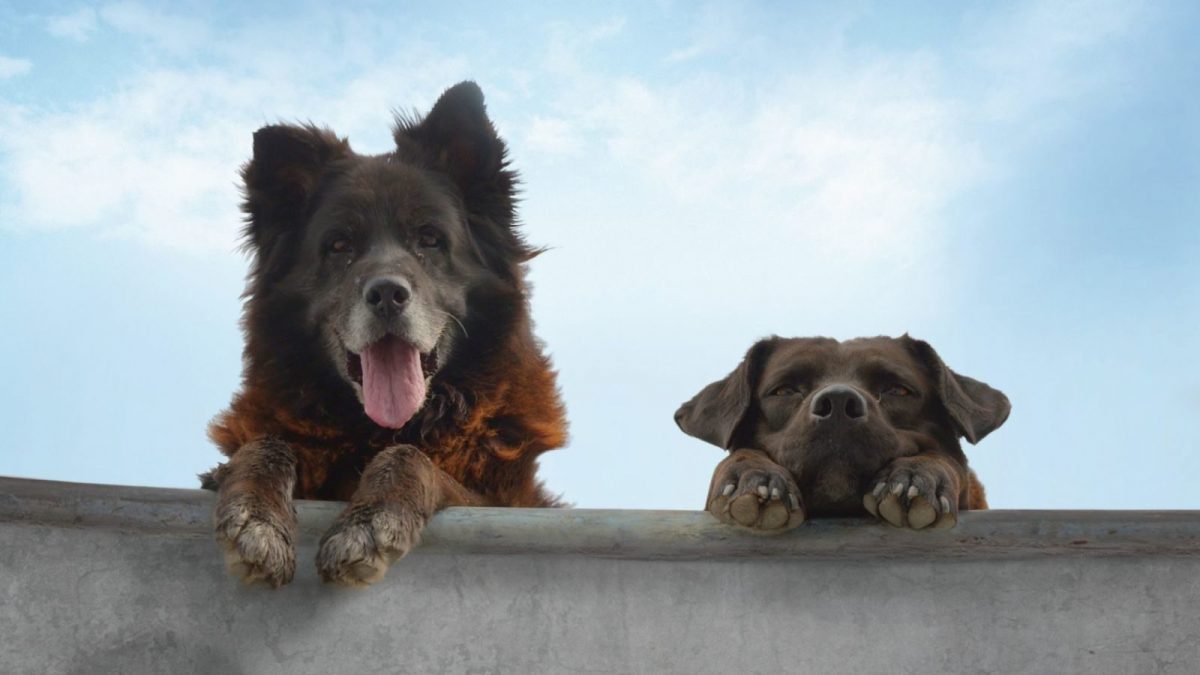
Los Reyes
The art of documentary is not necessarily about choosing the right subject, but the most interesting perspective. Set in a Santiago skate park, Los Reyes follows two street dogs, the spry Chola and aged, auburn-tinged Football. With no voiceover and a carefully calibrated shooting style that alternates between shallow focus close-ups and extreme long shots, Bettina Perut and Iván Osnovikoff’s doc refuses to anthropomorphize its animal subjects. The way Perut and Osnovikoff film humans similarly departs from norms of representation: the young skaters are by and large kept off-screen, recalling run-ins with the corrupt police and otherwise passing the time. Through this novel approach to sound and image, the film evokes the sense of a vast, ambivalent world. By observing without sentiment the dogs’ oft-baffling behavior, from Chola humping a pillow to Football’s dulled canine teeth clamping onto a stone, Los Reyes is an affecting and irreducible chronicle of life on the margins. — ZACH ZAHOS
ANIMATED FEATURE FIlm

Penguin Highway
Penguin Highway begins as a light-hearted romp in which fourth-grader Aoyama-kun investigates the mysterious appearance of penguins in his sunny village. However, the longer the film goes on the more viewers will realize its initially silly premise works to express a profound sentiment on wonder and loss. There’s a scene late in the film when, apropos of nothing, Aoyama’s younger sister wakes him in the middle of the night because she had a scary thought that their mother will eventually die. The moment is startling and sweet and while it doesn’t directly impact the plot it still feels essential to the story. Moreover, it shows how much trust the filmmakers place in their audience as they tell a story from the perspective of children but manage to never talk down to them. Instead, Penguin Highway quietly confronts the idea that the universe is larger and stranger than we can ever fully grasp and acknowledges that even if push that idea away it doesn’t leave us when we grow older. The film played as a boutique screening last year for a couple days in select theaters and vanished, which is fast becoming a distribution norm for anime in the US. But Penguin Highway is worth tracking down, buying a Blu-ray, and sliding it next to your collection of Ghibli films. It’ll fit right in, I promise. — JACOB MERTENS
CINEMATOGRAPHY
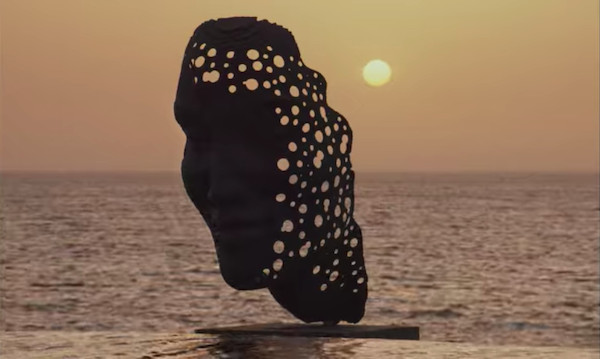
Claire Mathon, Atlantics
Mati Diop’s Atlantics is a story of limbo. Unpaid for months of labor constructing a massive and mystical high-rise in suburban Dakar, a group of Senegalese men drift out on the Atlantic Ocean looking for fairer work upon the shores of Spain. Instead, they meet catastrophe. In the coming nights, the ghosts of these men possess the townspeople, haunting their former employers and lovers alike. Elevating this gothic romance is the work of Claire Mathon, who lays serious claim to being the most promising and accomplished cinematographer of her age bracket, give or take a Bradford Young. Her images in Atlantics are varied but of a piece: sobering when gazing at length upon the workers in the back of a speeding jeep, abstract when rendering the murky immensity of the hazy sea, knotty when settling into the craggy corners of city streets. They veer from documentary-tinged in the heat of day to alien in the green-laser glow of night. Mathon’s camera is otherworldly but objective, capable of capturing the essence of our Earthly realm as well as any others that might be stopping by. — JJ BERSCH
MUSIC (ORIGINAL SCORE)
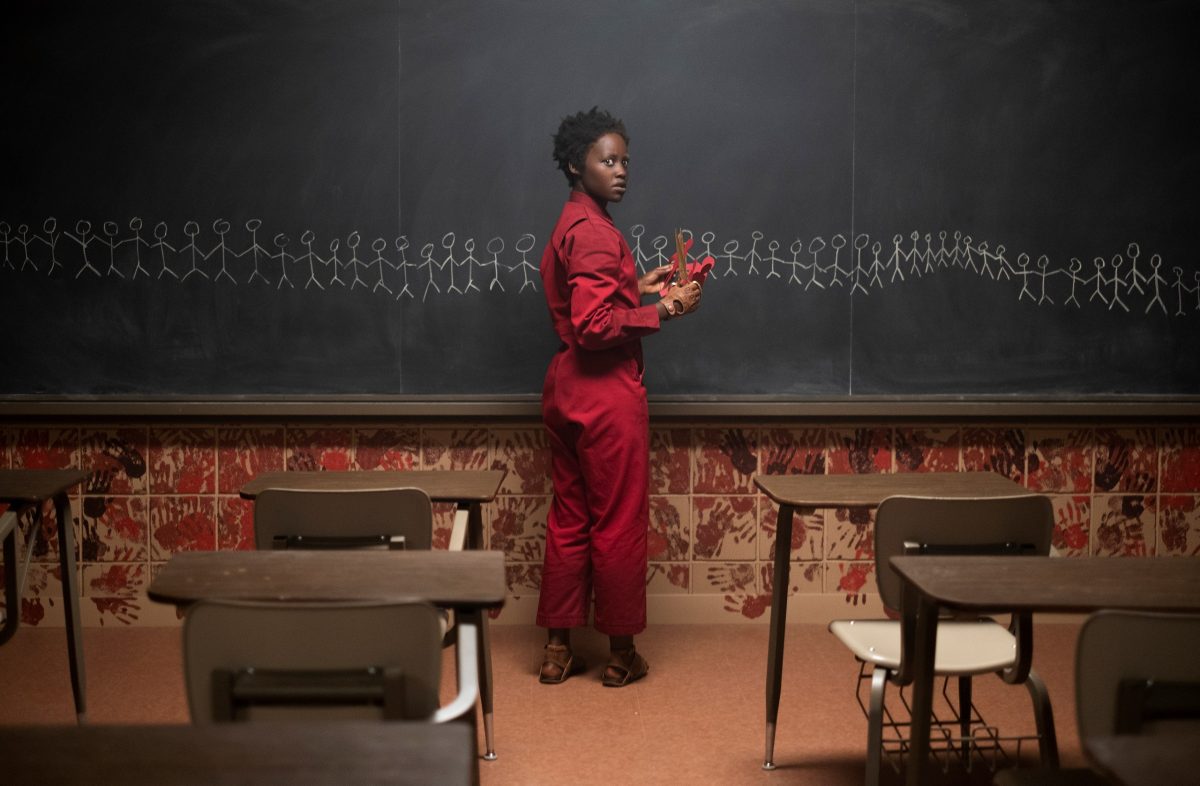
Michael Abels, Us
On Christmas Day, 2018, the first trailer for Us was released, reviving and redefining Luniz’s 1995 track “I Got 5 on It” for our time. Us composer Michael Abels did not, actually, originate this haunting chopped and screwed remix; that would be trailer editor John Cantu, following advice from Universal VP Joe Wees. But Abels deserves the credit for weaving this remix into the fabric of his Bernard Herrmann-esque score, as in his climactic cue, “Pas De Deux.” For the remainder of the film, Abels demonstrates the range of his knowledge as well as the flexibility of his talent, drawing both from the canon of European classical music and West African musical tradition. As befits the film’s narrative fractures and mysterious connotations, Abels’ score for Us incorporates an eclectic variety of musical idioms, from Tchaikovsky-inspired classical ballet to West African instrumentation, including the cimbalom, kalimba, berimbau, and didgeridoo. — ZACH ZAHOS
MUSIC (ORIGINAL SONG)
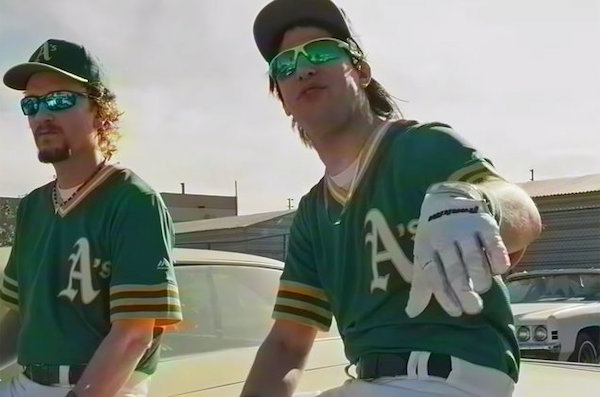
“Uniform On,” The Lonely Island Presents: The Unauthorized Bash Brothers Experience
Given the track records of joke rappers, Saturday Night Live cast members, and things I liked in middle school, it is a miracle that the Lonely Island still even exists in 2020, let alone that they are still so funny. But the same thing that initially propelled Andy Samberg, Akiva Schaffer, and Jorma Taccone into online video superstardom is also what’s made them so enduringly endearing: a total commitment to the bit, however absurd it may be. And never have they committed harder than in The Unauthorized Bash Brothers Experience. Following the financial (but not creative) disappointments of feature film projects like Hot Rod, MacGruber, and their masterpiece Popstar: Never Stop Never Stopping, the crew returns with a decided push further away from the mainstream (and the multiplex)—a 30-minute Netflix short centered around the titular duo of Mark McGwire and Jose Canseco, who smashed ‘taters and (allegedly) housed ‘roids in the late ‘80s/early ‘90s for the Oakland Athletics. The entire thing is filled with wall-to-wall bangers, but lead single “Uniform On” is the short’s mission statement: stupid, specific, and surprisingly dark. — JJ BERSCH
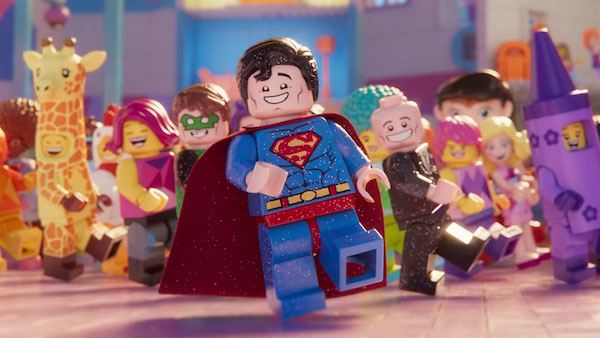
“Catchy Song,” The Lego Movie 2: The Second Part
Emmett, Lucy, and their pals explore a sparkly side of their universe in The Lego Movie 2: The Second Part, and the frighteningly energetic soundtrack to their brick-built world expands accordingly. The first film’s frenetic earworm, “Everything Is Awesome,” already tested the boundaries of musical nonsense, and the sequel quickly announces its intent to be somehow even sillier, with the “Tween Dream” remix of that song. But The Lego Movie 2’s standout is the new anthem “Catchy Song,” a composition as effective as it is literally titled. Produced by Dillon Francis and featuring T-Pain and That Girl Lay Lay, “Catchy Song” is introduced in one of the film’s most amusing sequences. The suspicious ruler of the Systar System, Queen Watevera Wa’Nabi, employs the tune’s repetition and simplicity as a form of “music therapy,” forcing everyone within earshot to get on the same incessantly happy wavelength. A swarm of brainwashed figures, including Dorothy Gale, her friends from Oz, and three variations of Wonder Woman, try to sing and dance our visiting heroes into cheerful compliance. Even MetalBeard, a tough-talking pirate with a body made of weapons and maritime accessories, trades his sabers and sharks for musical instrument appendages when he hears the song, joyfully exclaiming, “My leg is a piano!” The Lego Movie 2 doubles down on the first film’s constant string of references, dense visual detail, and dedication to comedic chaos, most memorably when this catchiest of pop songs is weaponized against a ragtag group of plastic protagonists. It’s a combination of foreboding and fun that only this franchise could pull off. – MATT ST. JOHN
PRODUCTION DESIGN
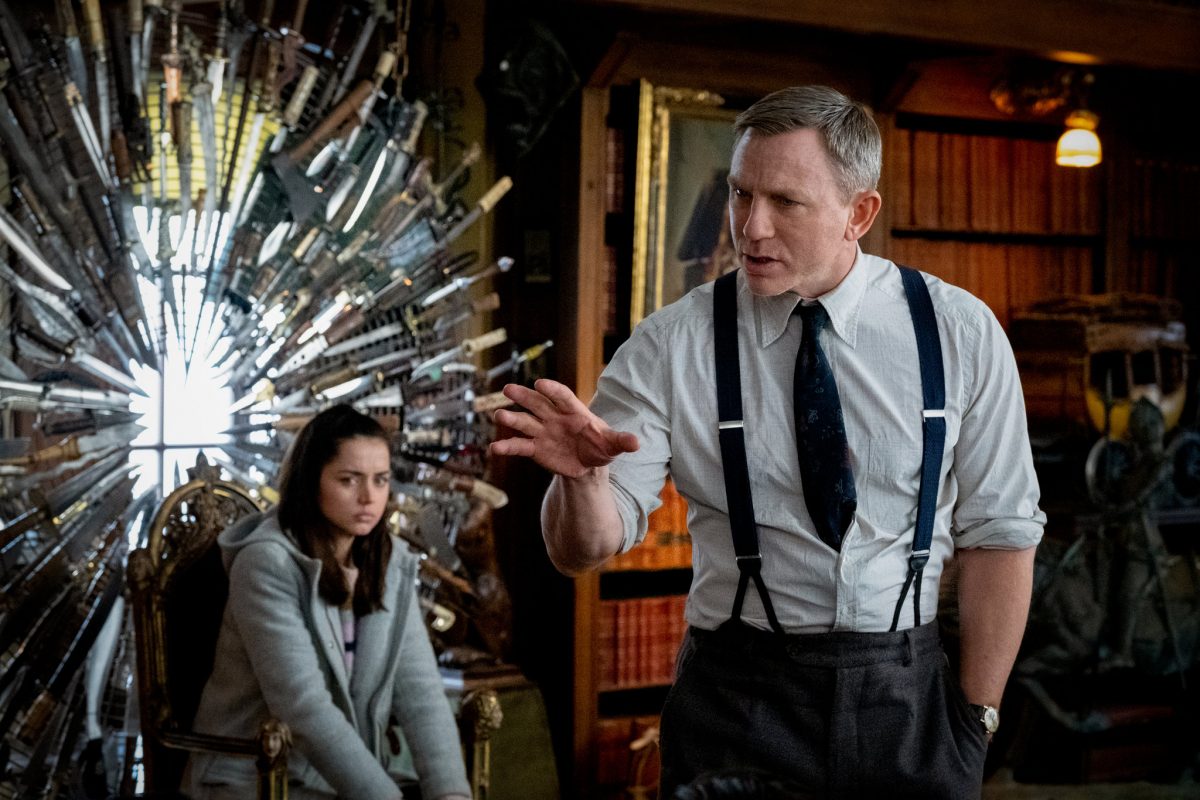
Knives Out
There was no more iconic piece of set design all year than the halo of knives in Knives Out. Except perhaps for the “My House, My Coffee, My Rules” mug. Knives Out is a domestic mystery, and that requires a lot of verisimilitude in terms of marrying the script with the visuals. Not only should the space feel like a lived-in representation of the characters who occupy it, but it should also function narratively as a space where the action can unfold and all of the twists in the narrative are telegraphed by the home itself. The house in Knives Out achieves this beautifully. It also performs another function—the house is a meditiation on the film’s larger themes of white liberal insincerity, privilege, and the blinding effects of wealth. The action in Knives Out moves around almost every single room in the house, scaling the walls and sneaking through the grounds, yet the audience never feels disoriented or out of place. Production designer David Crank manages this and much more. — TOM WELCH
COSTUME DESIGN

The Beach Bum
By common wisdom, the Academy Award for Best Costume Design tends to go to period pieces—defined narrowly, here, as films with upper-class dress and an overall commitment to historical verisimilitude. In other words, The Beach Bum, with its contemporary setting and tawdry duds, was never remotely near the Academy’s radar. Costume designer Heidi Bivens, whose filmography includes Harmony Korine’s Spring Breakers and David Lynch’s Inland Empire, follows a different guiding principle. The costumes in The Beach Bum are hilarious, outrageous, and above all salient. Whether you love or despise the film, the image of Matthew McConaughey in a floral V-neck, tie-dye bikini, or purple thong is not one that easily fades from memory. Nor can Martin Lawrence’s side-splitting turn as Captain Wack be fathomed without his yacht cap, navy blazer, white shorts, and cheap military trim. Using cheap, at-hand materials, Bivens tells us all we need to know about these fun-loving, starry-eyed characters, providing years of warm weather Halloween ideas in the process. — ZACH ZAHOS
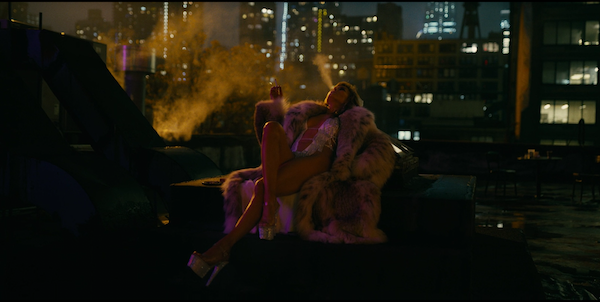
Hustlers
Mitchell Travers costumes in Hustlers are truly a work of artistic, and in some cases engineering, genius. They are not simply an accurate period rendering of the early-00s, although they do accomplish that extremely well. They also speak to each woman’s ambitions, her current station in life, how she is deploying her sexuality as a weapon, and which side of herself she wishes to present to the world. No costume piece is more effective at conveying story this year than Ramona’s (Jennifer Lopez) iconic fur coat. In a moment that instantly became Internet-iconic, Ramona is watched by the infatuated Destiny (Constance Wu) while she lounges in a fur coat, an intricate-but-barely-there bodysuit, and lucite heels while smoking a cigarette on the roof. Ramona immediately welcomes Destiny to join her inside the fur coat to keep warm, as it is so large it can encompass both women. In this one image, the audience understands that Ramona has taken Destiny under her wing, quite literally, although in this case, the protection the wing provides is nouveau riche wealth and female bonding. The apex of their relationship is Ramona gifting Destiny a similarly ostentatious fur coat, a mark of how far Destiny has come in Ramona’s eyes, her ability to stand as Ramona’s equal in their partnership, and how these former working class, marginalized women exult in displaying their newfound wealth for all to see, and wear it like armor. In the film’s melancholic denouement, each woman’s fall from that heady spot is represented in their much more understated outfits (Ramon is now in a jean jacket for god sakes!). As Destiny reflects on their now-broken friendship, she ends on the memory of Ramona wrapping her in a fur coat, as a single tear falls down her face. Here I am, back in my feelings about a fur coat. That’s awards-worthy costume design. — LAURA SCHUMACHER
Visual Effects
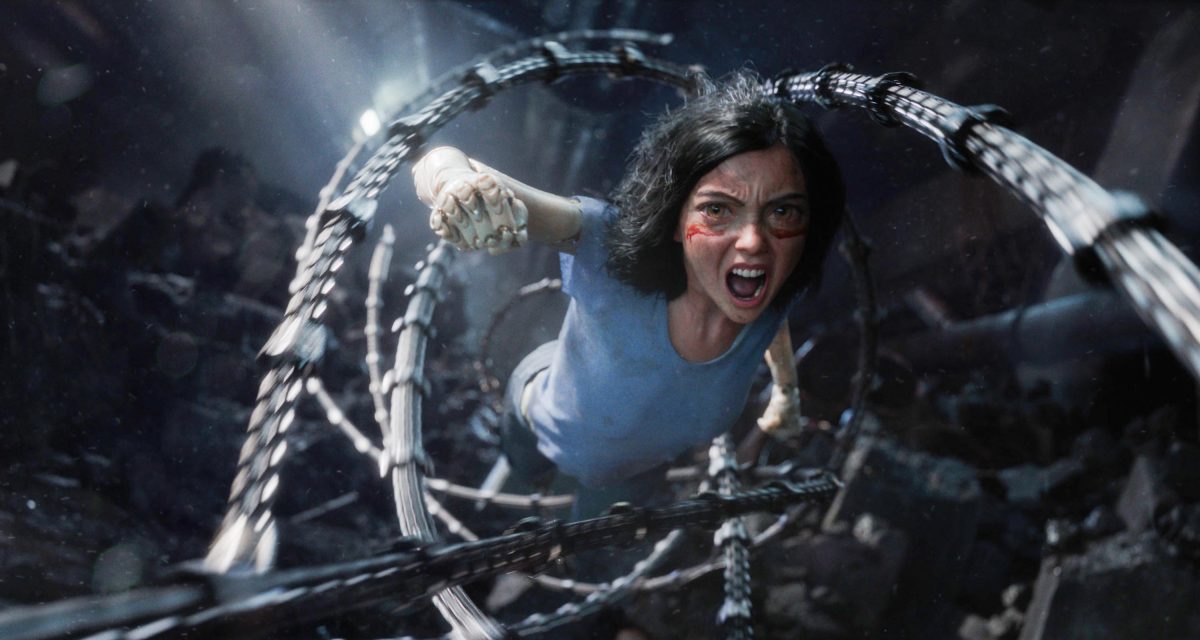
Alita: Battle Angel
When the first trailers for Alita dropped, many (myself included) were put off by the visual design in Robert Rodriguez’s anime-inspired world, specifically the gigantic, CGI-enhanced eyes of its title character (Rosa Salazer). It turns out these criticisms were premature. In context, Alita does everything one could hope with a largely CGI world, providing a transporting, stylized world that effectively married the sensibilities of the original manga, Rodriguez’s rough-hewn, indie-tinged aesthetic, and the maximalist ethos of the film’s producer James Cameron. Beyond that, Salazar’s lead turn represents not only one of the finest performances of the year, but another leap forward for motion capture technology. Her wide open eyes don’t just recall the aesthetics of a manga, they stand in for the character herself, a tabula rasa approaching the world like a child, robbed of her identity yet still pure of heart. And Salazar’s performance is indicative of the film itself, open-hearted, slightly corny, but with a killer instinct. It never quite caught fire as the mainstream success it deserved to be, but I’m still holding out hope for a sequel so that I might see what Rodriguez and Cameron could cook up for a follow-up. — LANCE ST. LAURENT

Gemini Man
In the annals of technological film history, 2019 may go down as the year of de-aging. Between Captain Marvel and The Irishman, the technology stepped into the spotlight in a major way, but perhaps the most impressive implementation was in Ang Lee’s Gemini Man. The film’s script is cliche-ridden and filled with paper-thin characters, and several of the film’s performances are broad, bordering on silly. But two of Lee’s technological gambits, the aforementioned de-aging tech, and the use of 120fps, paid off massive dividends. If you watch the film at home or in a 24fps theater, Gemini Man will undoubtedly seem like a silly, substandard action thriller. Presented in high frame rate, though, the film becomes a bizarrely expressionistic experience, one that forces you to scrutinize ever inch of the frame, finding new visual splendor in images both spectacular and mundane. It’s Will Smith’s dual performance as an aging hitman and his 25-year-old clone that make the film a must-see, though. Smith’s work is not only perfectly pitched for the technological milieu (it’s hard to explain, but it requires a different sort of acting), it’s smartly differentiated between the two men. The younger Smith, named Junior in the film, is accomplished not through traditional de-aging—which tweaks the original image—but by whole-cloth CGI creation. Amazingly, even at incredibly high frame rates, Junior is a completely credible CGI creation, even when standing alongside the flesh and blood older Smith. That, in and of itself, deserves recognition, despite the film’s other failings. — LANCE ST. LAURENT
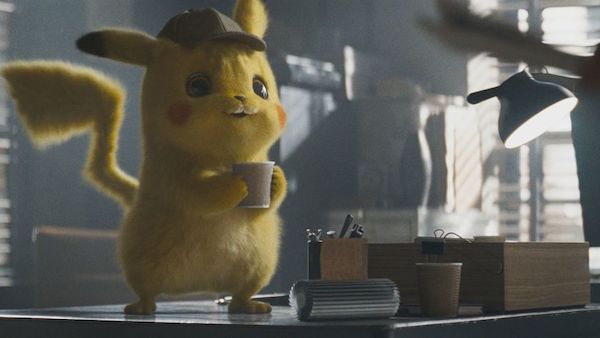
Detective Pikachu
Pokémon are, by their nature, adorable, flat cartoon characters, designed to be as appealing as possible when viewed as 8-bit line monochrome line drawings on the tiny screen of a Game Boy. As technology has evolved, the wide-eyed critters have grown more three-dimensional, but retain something of that fundamental simplicity; that’s part of the fun of something like the mobile game Pokémon Go, which allows players to incongruously glue CGI cartoon figures onto footage of the real world. It is the first triumph of Pokémon Detective Pikachu that it manages to preserve this essential cartoon softness of the video game monsters while re-conceiving them as photorealistic animals with detailed, physically plausible surfaces. But that’s not even the real miracle of the film. Rather, what makes this one of the year’s (the decade’s!) best examples of visual effects wizardry is how skillfully the Pokémon have been composted into live-action footage stylized to have the grit and reality of a ’70s crime thriller. Consider how the colorful lights of this offbeat fantasy world reflect from Pikachu’s giant saucer eyes; or how every little short strand of hair on his furry body shifts with him and creates its own shadow. Consider how perfectly he moves in and out of focus with his human companion. Consider the number of objects he interacts with. One might find this to be little more than a feature-length branding exercise that has no deeper artistic designs than making people coo in delight at how cute real-life Pikachu is; but that’s just the thing, he is that cute. Mking him feel cute in the way that a genuine animal does, rather than a cartoon, is an astonishing achievement: not for one frame does the illusion fall apart, even though it’s one of the most implausible illusions you could imagine. — TIM BRAYTON

